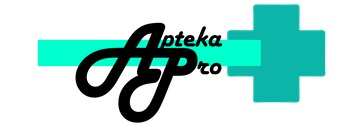Composition
The solution contains:
Active substances:
a mixture of sterile staphylococcal phagolysate filtrates,
- streptococcus
- enterococci,
- Proteus
- Klebsiella (pneumonia and oxytoka),
- Pseudomonas aeruginosa and Escherichia coli 100 ml.
Pharmachologic effect
Pyobacteriophage liquid complex - a drug that has a specific selective antibacterial effect. Pyobacteriophage is active against strains of streptococci, protea, staphylococci, enterococci, oxytok, Pseudomonas aeruginosa, Klebsiel pneumonia and Escherichia coli.
Pyobacteriophage lyses sensitive bacteria due to the ability to be fixed on their membrane and penetrate into the cell. In a bacterial cell, phage particles multiply due to the energy resources of microorganisms, which leads to their death.
After the death of a bacterial cell, mature phage particles are released that can infect other sensitive microorganisms.
Pyobacteriophage does not affect other types of bacteria and does not cause disturbances in the natural microflora.
Indications
Treatment and prevention of purulent-inflammatory and intestinal diseases caused by staphylococci, enterococci, streptococci, Pseudomonas aeruginosa, Klebsiella, pathogenic Escherichia coli of various serogroups, proteome for internal, rectal and external use:
- Diseases of the ear, throat, nose, respiratory tract and lungs: inflammation of the sinuses of the nose, middle ear, tonsillitis, pharyngitis, laryngitis, tracheitis, bronchitis, pneumonia, pleurisy.
- Surgical infections: suppuration of wounds, burns, abscess, phlegmon, boils, carbuncles, hydroadenitis, panaritium, paraproctitis, mastitis, bursitis, osteomyelitis.
- Urogenital infections: urethritis, cystitis, pyelonephritis, colpitis, endometritis, salpingo-oophoritis.
- Post-traumatic conjunctivitis, keratoconjunctivitis, purulent corneal ulcers and iridocyclitis.
- Enteral infections: gastroenterocolitis, cholecystitis, dysbiosis.
- Generic septic diseases.
- Purulent-inflammatory diseases of the newborn: omphalitis, pyoderma, conjunctivitis, gastroenterocolitis, sepsis, etc.
- Other diseases caused by bacteria Staphylococcus, Streptococcus, Enterococcus, Proteus, Klebsiella pneumonia and Oxytoca, Pseudomonas aeruginosa and Escherichia coli.
- For prophylactic purposes, the drug is used to treat surgical and freshly infected wounds, as well as for the prevention of nosocomial infections according to epidemic indications.
An important condition for effective phage therapy is a preliminary determination of the phage sensitivity of the pathogen.
Pregnancy and lactation
During pregnancy, as well as breastfeeding, the drug Piobacteriophage can be prescribed by your doctor.
Contraindications
Are absent.
Side effects
When using the drug Pyobacteriophage, undesirable effects were not observed.
Interaction
The use of the drug is possible in combination with other drugs, including with antibiotics.
How to take, course of administration and dosage
Pyobacteriophage is intended for local and oral administration, as well as for rectal administration.
Treatment of purulent-inflammatory processes is recommended by simultaneous topical administration and oral administration of the drug Pyobacteriophage.
Depending on the location of the infection, Pyobacteriophage is recommended for:
1. Local application in the form of lotions, irrigation, applications and tampons, moistened solutions. In this case, the necessary amount of solution is used, based on the size of the affected area. With abscesses, the solution should be injected into the cavity after removal of pus by puncture (the volume of the solution should be slightly less than the volume of extracted pus).
2. The introduction of the solution into the pleural, articular and other limited cavities. After maintaining the required amount of bacteriophage, capillary drainage is left through which repeated doses of the drug are subsequently administered.
3. The introduction of the solution into the drained cavity of the bladder and renal pelvis through a cystostomy or nephrostomy.
4. The introduction of the solution into the uterine cavity or vagina, including in the form of tampons soaked in the solution.
5. Instillation, washing and rinsing, as well as the introduction of turundum moistened with a solution in otolaryngological practice.
6. Introductions into the conjunctival sac in ophthalmic practice.
7. Introducing moistened turundas into periodontal pockets in dental practice.
8. Introductions into the rectum in the form of enemas in gastroenterological practice.
The dose of the drug Pyobacteriophage and the duration of the course of therapy are determined by the doctor.
A single dose recommended for children up to 6 months is 5 ml when administered orally or 10 ml with rectal administration.
A single dose recommended for children 6-12 months old is 10 ml for oral administration and 20 ml for rectal administration.
A single dose recommended for children 1-3 years old is 15 ml for oral administration and 30 ml for rectal administration.
A single dose recommended for children 3-8 years old is 20 ml when administered orally and 40 ml for rectal administration.
A single dose recommended for children from 8 years of age and adults is 30 ml for oral administration and 50 ml for rectal administration.
In the treatment of purulent-inflammatory diseases and intestinal diseases, as a rule, an appropriate single dose is prescribed three times a day.
If with local use of the bacteriophage the wound was pre-treated with an antiseptic, it is necessary to wash the wound with 0.9% sodium chloride solution before using the Pyobacteriophage solution.
For children younger than 6 months with enterocolitis and sepsis, the solution of Piobacteriophage is administered in the form of high enemas twice or thrice a day. If the child does not have the development of regurgitation and vomiting, the drug can be given orally.
The average duration of a course of therapy is from 5 to 15 days.
As a prophylaxis, the drug is prescribed in a single dose twice a day for 5-7 days.
Overdose
Overdose relief measures not established.
Special instructions
Before use, a vial of liquid bacteriophage must be shaken. In case of turbidity do not use!
Release form
Solution for oral administration and topical application.
Storage conditions
In a dry, dark place at a temperature of 2–8 ° C
Related Products


